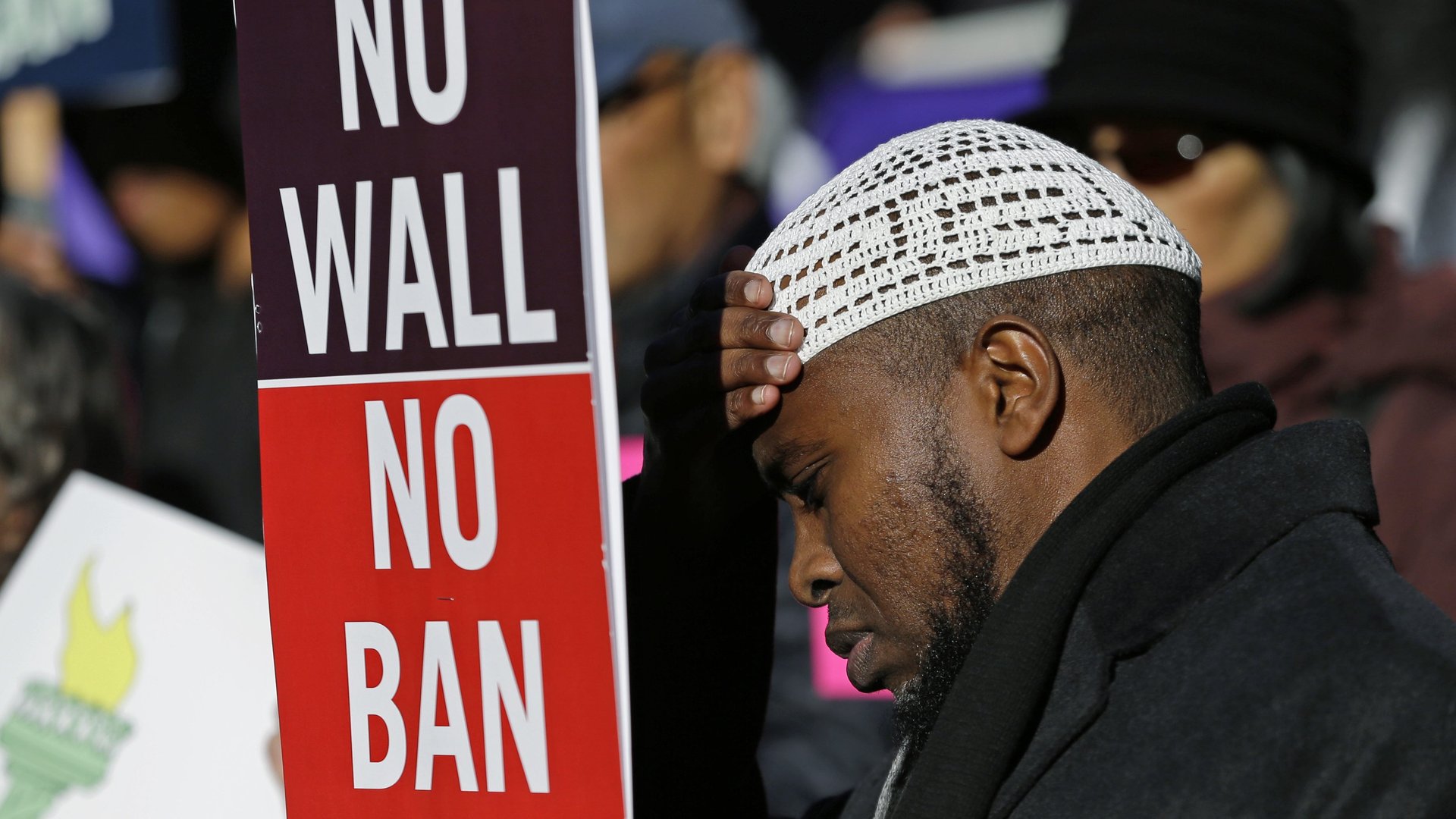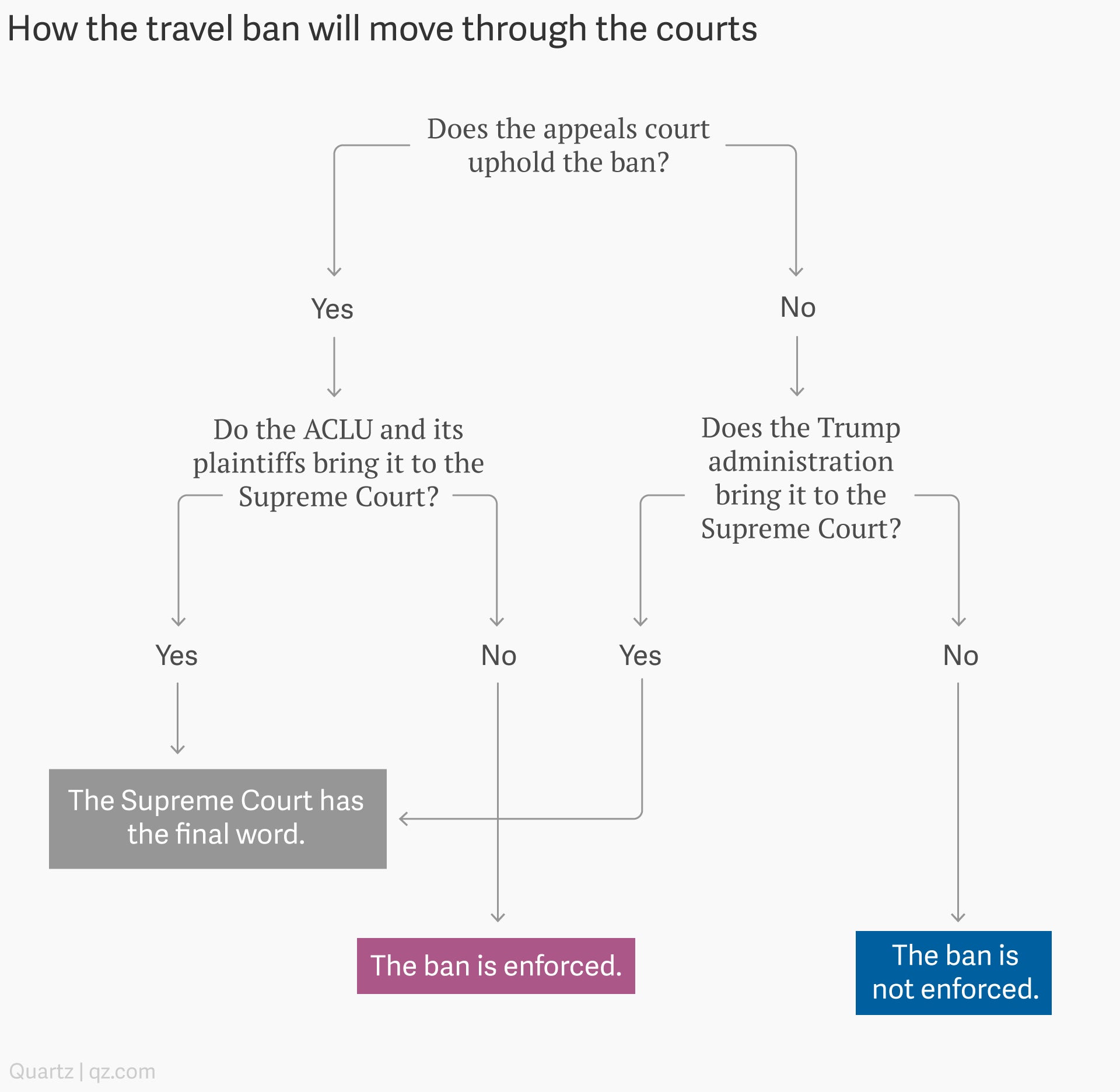Flow chart: What happens next to Trump’s travel ban?
Earlier this week, the Supreme Court decided to temporarily uphold the US government’s third version of a travel ban, which prohibits people of certain nationalities from entering the US.


Earlier this week, the Supreme Court decided to temporarily uphold the US government’s third version of a travel ban, which prohibits people of certain nationalities from entering the US.
The ban had been overturned in two lower court decisions, and is currently being appealed by government lawyers. On Dec. 6, the ninth circuit court heard arguments; today the fourth court hears them.
Prompted by the Supreme Court’s order to enforce the ban until a decision has been made, both courts are expected to rule soon. But no matter how they rule, it’s likely that the ban will remain active for some time to come, says Shoba Wadhia, a professor at Penn State Law School.
Wadhia explains that the verdict will likely be brought to the Supreme Court, by parties both against and for the ban. Therefore, the order to keep the ban active, pending a final decision, could stay in effect until then. Here’s how the ban will likely move through the courts:

The ban currently affects citizens of Chad, Iran, Libya, North Korea, Somalia, Syria, Venezuela, and Yemen. It does not apply to permanent residents, also known as green card holders, or dual nationals traveling on the passport of the non-restricted country. The ban also does not apply to foreigners already in possession of a valid visa, even if they have not yet reached the US.